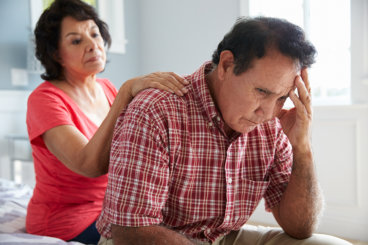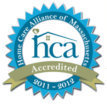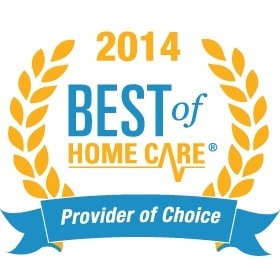
Dementia is a blanket term that refers to a cohort of pathophysiological conditions. The most common form of dementia is Alzheimer’s disease. Other examples of dementia include vascular dementia, Lewy body dementia, Parkinson’s disease, Shy-Drager syndrome, Huntington’s disease, alcohol-related dementia, AIDS-related dementia, and Creutzfeldt-Jakob disease. Common symptoms of dementia include progressive loss of cognitive functions such as memory, social skills, and emotional reactions.
Dementia and sleep disorders share a paradoxical ‘chicken and egg’ relationship. While many people living with dementia tend to experience poor sleep on a regular basis, patients diagnosed with certain sleep disorders – such as insomnia and sleep apnea – are also more likely to develop dementia symptoms.
This article will take a closer look at the link between dementia and sleep disorders, as well as some strategies for diagnosing different conditions and mitigating dementia-related sleep issues.
The Relationship Between Dementia and Sleep Disorders
According to the latest estimates from the Institute for Dementia Research & Prevention (IDRP), 1 in 6 women and 1 in 10 men will develop dementia-related symptoms after the age of 55. Alzheimer’s disease, the most common form of dementia, affects 60% to 70% of dementia patients. This condition is characterized by decreased production of the acetylcholine neurotransmitter and a progressive loss of cognitive functions. Roughly 5.4 million Americans have Alzheimer’s disease and the number is expected to increase to 14 million by 2050. Other more common forms of dementia include vascular dementia, which affects blood flow to the brain and can lead to strokes; and Lewy body dementia, which is characterized by the buildup of irregular proteins in the nervous system.
Three categories of people are at a heightened risk of dementia: the elderly, patients with neurodegenerative diseases, and patients with mild cognitive impairment. Although 40% of elderly patients have sleep-related complaints, sleeping disorders like insomnia are less common in healthy older people and are more often associated with comorbidities.
In addition to insomnia, other sleep disorders, such as sleep apnea, REM sleep behavior disorder (RBD), restless legs syndrome (RLS), periodic limb movements (PLMs) and sleep-disordered breathing (SDB), become more prevalent with increasing age. RBD and sleep apnea are of particular interest with regard to dementia. RBD is used as a contraindication of Lewy body dementia, and may also be used as prognostic and predictive tools for neurodegeneration in Parkinson’s disease. Similarly, obstructive sleep apnea (OSA) has several common causal factors with Alzheimer’s disease; OSA is also widely believed to contribute to the pathophysiology of Alzheimer’s.
Through interviews and polysomnogram tests, scientists have noted longer sleep latency, increased sleep fragmentation, and a decrease in both sleep efficiency and total sleep time in dementia patients. The most common sleep disorder symptoms in patients with dementia are increased daytime sleepiness, nighttime wandering, confusion, and agitation (also known as sundowning). The origins and mechanisms of sundowning are still unknown, but many suspect these behaviors are related to the early circadian cycle of senior citizens.
In most cases, patients with dementia experience progressively less REM sleep throughout the night, as well as an increase in nighttime awakenings. The higher REM latency in dementia patients can be attributed to the overall reduction of the REM phase. Neuronal degeneration in Alzheimer’s contributes to the sleep pattern changes by damaging the basal forebrain and the reticular formation of the brainstem, two regions that help regulate sleep patterns. Recently, a-synuclein aggregates have been attributed to dementia; synuclein proteins are normally present in synapses of nerve terminals in the brain.
An estimated 30 to 50% of Parkinson’s Disease patients suffer from excessive daytime sleepiness; this percentage grows as the disease becomes more advanced. Parkinson’s patients often have insomnia that comes and goes through the course of the disease, as well. A recent study found insomniacs and seniors with sleep problems tend to have beta-amyloid plaques in their brains at a higher rate than healthy sleepers. The characteristic plaques have even been found in the brains of elderly insomniacs who have not been diagnosed with Alzheimer’s or other dementia-related conditions.
Dementia and Sleep Apnea
Dementia patients often exhibit the symptoms of sleep apnea, such as chronic snoring and/or temporary loss of breath during sleep. Many experts believe that sleep apnea is directly correlated to induction of severe dementia, and vice versa; even though sleep apnea does not directly cause dementia, the effects of sundowning and persistent hypoxic conditions can symptomatically amplify dementia-related symptoms. Sleep-disordered breathing episodes are quite common; 90% of people with moderate-to-severe Alzheimer’s experience at least five respiratory events per hour of sleep. The overall prevalence of SDB in patients of dementia varies between 33% and 70%.
Insomnia as a warning sign of dementia
A recent study suggests a link between sleep deprivation and increased risk for Alzheimer’s. Levels of amyloid-beta protein in the bloodstream rise during waking periods and decline during sleep. This protein makes up some of the brain plaques found in Alzheimer’s patients. Problem sleep can be an early indicator of dementia. Alzheimer’s patients often see changes in their sleep patterns early on; what was once a 20-minute daytime nap now stretches to several hours per day.
In a recent long-term longitudinal study, older people who complained of daytime sleepiness, restless nights, and increased use of sleep aid medications were much more likely to develop Alzheimer’s symptoms within two years. The Canadian researcher who led this analysis stated that sleep problems were the single strongest early predictor of Alzheimer’s disease. Additionally, another study found that mice implanted with characteristic amyloid-ß plaques in their brains experienced higher rates of sleep disruption than the control group. When the plaques were removed from the mice, their sleep cycles returned to normal.
Diagnosing Sleep Disorders in Dementia Patients
Accurately diagnosing sleep disorders in dementia patients can be quite tricky, due to an abundance of underlying causes, mitigating factors and common causal symptoms. In patients with dementia, sleep disturbances are generally categorized into four different categories:
- Trouble falling or staying asleep (insomnia)
- Excessive daytime sleepiness (hypersomnia)
- Difficulty breathing during sleep (apnea) or excessive nighttime physical activity (such as restless leg syndrome)
- Nocturnal hallucinations and/or behavioral problems
It should be noted that dementia patients may simultaneously exhibit symptoms of more than one complex; this sort of co-morbidity can further complicate the diagnostic process. Additionally, sleep disorders can occur due to other factors, such as medication side effects or conditions of long-term care facilities.
Let’s look at some of the diagnostic criteria used to evaluate different sleep disorders in elderly patients and patients with dementia.
Insomnia
Although insomnia symptoms vary from person to person, the condition is normally divided into two categories: sleep onset insomnia, or the inability to fall asleep easily; and sleep maintenance insomnia, or the inability to remain asleep throughout the night. Insomnia may also be considered a primary condition that arises independently, or a comorbid condition that simultaneously exists with one or more other disorders.
In order to receive an insomnia diagnosis, patients must experience trouble falling or staying asleep for a period of one month or longer. ‘Chronic insomnia’ is diagnosed sparingly in older adults; many take one or more medications to address different conditions, and ‘psychosocial comorbidities’ are also taken into account. An insomnia diagnosis will require a detailed overview of the patient’s medical history, including all prescriptions, and a thorough physical exam.
Hypersomnia
Like insomnia, hypersomnia is a broad term referring to conditions that cause excessive daytime sleepiness (EDS) that are not related to insomnia/sleep deprivation. Hypersomnia is characterized by the inability to remain awake and alert during normal ‘waking hours’. Some of the most common hypersomnia disorders include narcolepsy and idiopathic hypersomnia; these disorders may arise on their own, or develop due to other factors like substance abuse or medication side effects.
Although research about hypersomnia in older patients is somewhat scant, physicians often use the same set of diagnostic criteria for these populations as they would for other patients. They will typically interview the patient about their sleep history, as well as any current sleep partners. Doctors will also inquire about the presence of cataplexy or a sudden loss of muscle strength that may accompany narcolepsy and other hypersomnia conditions. Patients may be asked to maintain a ‘sleep journal’, which includes the onset and frequency of daytime sleepiness episodes, as well as the patient’s nightly amount of sleep.
Sleep Apnea
Sleep apnea is generally defined as the temporary loss of breath during sleep. Apnea is broken down into two specific conditions: obstructive sleep apnea (OSA), characterized by an obstruction of the upper airway; and central sleep apnea (CSA), which arises due to problems in the cardiovascular and/or central nervous systems.
In addition to EDS, severe snoring is a common symptom in people with sleep apnea. Other telltale signs include choking, gasping for air and nocturia (or excessive nocturnal urination). Apnea is common in elderly people, as well as those with a history of obesity.
Restless Leg Syndrome (RLS)
People with RLS experience painful sensations in their legs that are severe enough to disrupt their sleep. The sensations are often described as an intense itch or tickling that persists throughout the night. Although some people independently develop RLS early in life, it is a secondary condition in most patients. It is widely believed that iron deficiency plays a role in the development of RLS as a secondary condition.
There are currently no laboratory tests used to diagnose RLS, so physicians must rely on patient interviews to determine if the condition is present. People with RLS often feel a strong urge to move their legs while lying down, even though the painful sensations will almost always intensify when their bodies are at rest. The majority of RLS patients also experience more intense pain, as well as stronger urges to move or fidget, at night. Physicians use these criteria to differentiate RLS from other conditions that can cause soreness and pain in one’s legs.
Circadian Rhythm Sleep Disorders (CRSDs)
Circadian rhythm sleep disorders (CRSDs) are characterized by normal sleep patterns that occur at irregular times of the day, often due to misalignment with the internal circadian clock. Examples of CRSD include advanced sleep phase disorder (ASPD), when patients fall asleep and wake up at relatively early times; and irregular sleep-wake disorder (ISWD), when one’s daily sleep patterns are broken up into chunks over a 24-hour period, rather than in one prolonged phase. CRSDs are particularly common in elderly people due to changes in their circadian rhythms brought on by aging, as well as reduced exposure to natural light and a decrease in physical activity.
Physicians can use certain biological indicators – such as melatonin levels and body temperature – to evaluate whether or not a patient has problems with their circadian clock. However, the symptoms of CRSDs can be misleading; as a result, most doctors will conduct a full patient screening to check for other sleep disorders (such as insomnia and sleep apnea), as well as psychological conditions like depression or anxiety.
Parasomnia
Parasomnia disorders are characterized by involuntary physical or emotional reactions during sleep. One of the most common parasomnias in elderly people and people with dementia is REM sleep disorder (RBD), which involves violent physical movement that arises during dreaming. Other examples of parasomnia include night terrors, sleepwalking, and enuresis (or bed-wetting), although these conditions are more common in children and young adults.
Physicians will typically diagnose RBD by reviewing a patient’s medical history and conducting tests that evaluate levels of muscle activity during sleep. RBD is often comorbid with certain dementias, such as Parkinson’s disease and Shy-Drager syndrome, and patients are also routinely evaluated for sleep apnea and nocturnal seizures.
Important Questions
Due to the complex relationships shared between different sleep disorders, and additional complications that arise due to dementia, patient interviews are essential for diagnosing sleep conditions in elderly people or people with dementia. A study published by the Journal of the American Geriatrics Society notes that the following inquiries can help doctors pinpoint specific sleep disorders, and rule out related conditions in the process.
- What times does the patient normally go to bed at night and wake up in the morning?
- Does the patient usually have trouble falling asleep at night?
- Roughly how many times does the patient wake up at night?
- If the patient wakes up during the night, do they typically have a hard time falling back asleep?
- Does the patient’s bed partner say that they frequently snore, gasp for air or stop breathing during the night?
- Does your bed partner say (or is the patient aware) of kicking or thrashing about while asleep?
- Is the patient aware of ever walking, eating, punching, kicking, or screaming during sleep?
- Is the patient sleepy or tired during much of the day?
- Does the patient usually take one or more naps during the day?
- Does the patient doze off involuntarily during the day?
- How much sleep does the patient require to feel alert and function well?
- Is the patient currently taking any type of medication or taking other measures to help them sleep?
Additional questions for patients may relate to leg restlessness, nighttime urination, daily exercise and physical activity, light exposure, caffeine intake and prescribed medications.
Treatment of Sleep Disorders in Dementia Patients
Effective cures remain elusive for both dementia and dementia-related sleep disorders, but certain treatment methods can alleviate most of the persistent symptoms. Medications can restore or improve cognitive function for patients with Alzheimer’s and other dementias; however, medications that alleviate the symptoms of insomnia and other sleep disorders in dementia patients have yet to be pinpointed. A meta-study by the UK-based Cochrane Groupnoted that “there is very little evidence to guide decisions about medicines for sleeping problems in” people with Alzheimer’s.
The high incidence of sleep-disordered breathing in demented patients is contraindicative that neuronal damage contributes to the respiratory problems during sleep, and in turn, contributes to the cognitive impairment seen in dementia. SDB is usually treated with continuous positive airway pressure (CPAP) machines. According to most home health care practitioners, the general rule of thumb is that patients with dementia can tolerate up to five hours of CPAP per night. CPAP therapy has been shown to decrease the incidence of SDB episodes in dementia patients from 24 to 10 per hour during sleep. CPAP treatment also decreases daytime sleepiness, and there are some indications that CPAP retards cognitive impairment in demented patients. Institutional caregivers have self-reported that CPAP treatment can decrease snoring for dementia patients, elevate their moods and improve their overall quality of life.
Taking a cue from the established correlation between circadian rhythms, agitation, and light exposure in demented patients, some doctors have begun using therapeutic strategies with bright light exposure to regularize sleep patterns. Melatonin and melatonin agonists have also attracted attention in recent years as a possible method of mitigating insomnia and other sleep disorders, as well as addressing symptoms of Alzheimer’s.
Most experts today recommend safety precautions for dementia patients – particularly those who have been diagnosed with RBD – to reduce the risk of injury during sleep. Caregivers or live-in family members should remove dangerous objects (such as weapons) from the bedroom, locking all doors and windows, and following up regularly with a doctor to monitor for signs of brain degenerating diseases.
In nursing homes and other institutionalized care facilities, sedatives are often delivered to patients to ensure nighttime sleep. But cognitive functions may be further compromised by sedative usage, so overuse of medications should be avoided if possible.
Ways to Improve Dementia-Related Sleep Issues
In addition to medications and treatment, there are steps that dementia patients can take on their own to effectively mitigate the symptoms of different sleep disorders. These include:
- A consistent sleep schedule: In order to maintain regular circadian patterns, dementia patients should strive to fall asleep and wake up at the same time every day. Adapting to a sleeping and waking schedule may be difficult at first, so they are encouraged to set alarms and force themselves out of bed at predetermined times in order to get on a healthy track.
- Outdoor and photo light therapy: Exposure to natural sunlight will help elderly people realign their circadian rhythm and reduce the effects of sleep disorders like insomnia and CRSDs. Studies have also found that light therapy can improve sleep patterns for people with Alzheimer’s disease. If patients are unable to spend time outside, then they can utilize specialized lamps outfitted with bright lights.
- A customized diet: While a nutritious, balanced diet is essential for any healthy person, elderly people with sleep disorders can supplement their meals with foods that help them sleep. For instance, calcium (found in milk, cheese and other dairy products) is known to trigger melatonin and induce sleepiness. Oatmeal and other grains achieve the same end by raising blood sugar, which can lead to sleepiness. Alternatively, people with dementia-related sleep disorders should avoid excessive amounts of foods, drinks and substances that hinder sleepiness; these include alcohol, tobacco and caffeine.
- Physical activity: While many elderly people are unable to exercise as rigorously as their younger counterparts, even light physical activity can lead to higher levels of sleep. Patients with dementia-related sleep problems are encouraged to walk in moderate amounts during the day. Nighttime stretching can also be helpful.
- A healthy sleep space: Creating, and maintaining, a healthy sleep environment is crucial for mitigating the symptoms of dementia-related sleep issues. Beds should be reserved for sleep and sex, and patients should avoid other activities in bed, such as eating or watching television. Additionally, bedrooms should remain dark and relatively quiet during normal sleep times; keep the blinds drawn, and adjust the temperature to ensure comfort throughout the night.
Additional Resources
For most people with dementia, sleep disorders are merely one of many problems they face. Thankfully, an accurate diagnosis, effective treatment and positive lifestyle choices can greatly reduce the effects of dementia-related sleep disorders and increase the patient’s overall well-being.
For more information about the relationship between dementia and sleep disorders, please visit the following online resources.
Resources for Dementia Patients
- Dementia and Sleep: Published in 2011, this comprehensive report from Australia’s Sleep Health Foundation discusses the causes, effects and potential treatment methods of different dementia-related sleep disorders.
- Current Treatments for Sleep Disturbances in Individuals with Dementia: Originally published in Current Psychiatry Reports, this extensive journal article outlines the medications, therapy techniques, behavioral interventions and other treatment methods for dementia patients with sleep problems.
- Sleep Issues and Sundowning: This informative page from the Alzheimer’s Association looks at the underlying causes, as well as coping techniques, for sundowning and other sleep issues related to Alzheimer’s disease.
- Sleep and Night-time Disturbance: This article from the UK-based Alzheimer’s Society looks at some common drug and non-drug approaches to common sleep disorders and problems in dementia patients.
- A Comparison in Sleep Profiles in Patients with Dementia with Lewy Bodies and Alzheimer’s Disease: A total of 37 patients living with Alzheimer’s disease and Lewy body dementia were studied for this article that first appeared in the International Journal of Geriatric Psychiatry. The findings indicate that all patients with dementia struggle with sleep issues, but these problems seem to impact LBD patients the most.
Resources for Caregivers
- National Respite Locator: This nationwide directory is designed to help caregivers and family members locate respite care services for people with dementia. The page also includes information about respite funding, state respite registration and services for veterans.
- How to Get an Elderly Patient with Dementia to Sleep at Night: Penned by Dr. Mary Languirand, this helpful how-to guide looks at some tried-and-true methods of inducing sleepiness and ensuring a good night’s rest for dementia patients.
- Caring for a Person with Alzheimer’s Disease: This step-by-step guide from the National Institute on Aging covers different facets of dementia patient caregiving, such as choosing physicians and health care providers, helping patients cope with physiological changes and understanding the effects of different medications.
- Take Care of Yourself: Published by the Alzheimer’s Association, this guide discusses the best ways to ‘recognize and manage caregiver stress’.
- Dementia Caregivers Share Their Stories: Originally released by Vanderbilt University Press, this 272-page book features accounts from real-life dementia caregivers and family members. The stories tackle topics like mental health issues, institutionalized living and home-based health care services.
Related Resources on Tuck


















